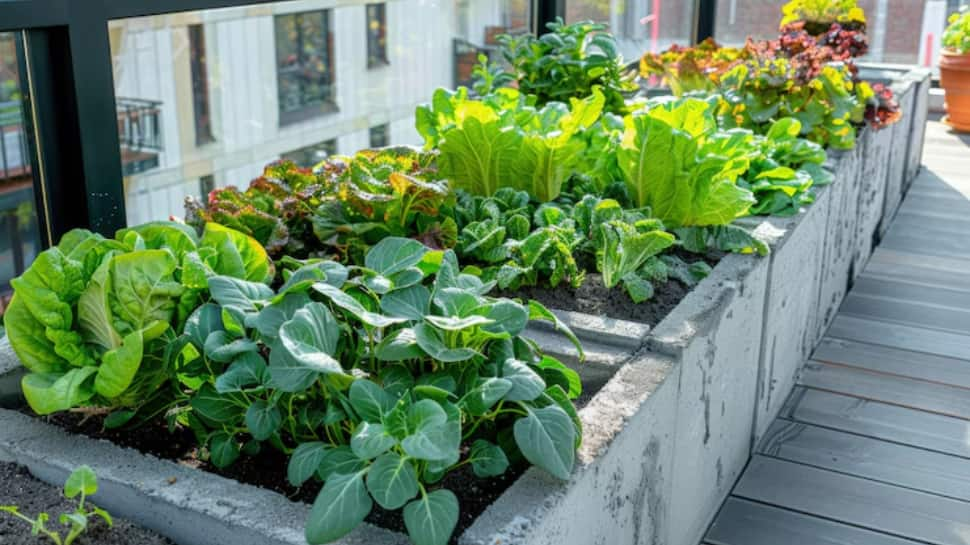In the middle of high-rise buildings, tight routines, and mounting lifestyle disorders like hypertension, a small balcony could quietly become your most powerful health ally. Urban life may limit your space, but it doesn’t have to limit your health. Believe it or not, growing the right vegetables in just a few pots can significantly help manage high blood pressure, and it doesn’t require a sprawling garden or expert-level skills.
India is witnessing a steep rise in non-communicable diseases. With the government’s 75/25 initiative aiming to bring 75 million individuals under standardised care for hypertension and diabetes by December 2025, the urgency to take health into your own hands has never been more real. As of March 2025, nearly 42 million are already receiving treatment for hypertension.
But beyond medications and doctor visits, what if you could support your heart daily with nothing more than your balcony and a few pots?
Why Diet Is Your First Line of Defense Against Hypertension
Maninder Singh Nayyar, Founder and CEO of CEF Group, emphasises “Hypertension is no longer an old-age issue. It’s now a young adult’s concern too, driven by sodium-heavy diets, sedentary work routines, and non-stop stress.
And that’s where your food choices become key. The vegetables you grow yourself can become potent tools in controlling blood pressure, because they’re not just fresh, they’re functional. Rich in potassium, nitrates, antioxidants, and fiber, homegrown vegetables support heart health naturally and powerfully.”
What You Should Grow: The 7 Best Vegetables for BP Management
1. Spinach: Packed with potassium and magnesium, spinach helps regulate sodium levels and blood pressure. Grows easily in shallow pots.
2. Beetroot: Rich in natural nitrates, beetroot boosts nitric oxide in the body, helping blood vessels relax and improving circulation.
3. Amaranth (Chaulai): An underrated super green, amaranth leaves are rich in fiber, potassium, and iron, great for blood pressure and digestion.
4. Cherry Tomatoes: These bite-sized powerhouses contain lycopene, a powerful antioxidant that supports blood vessel health and lowers inflammation.
5. Bell Peppers: High in vitamin C and antioxidants, they help in reducing oxidative stress, a key trigger in blood pressure elevation.
6. Carrots: Full of beta-carotene and fiber, they’re great raw or cooked, and support healthy cholesterol and stable BP.
7. Radishes: Hydrating and packed with potassium, they help balance electrolytes and contribute to smoother blood flow.
The Secret Ingredient: Homegrown Food Tastes Better and Heals Deeper
Maninder says, “It’s not just about nutrients. When you grow your own food, you regain control, over chemicals, freshness, and your mindset toward food.” These veggies don’t need to be bought from expensive health stores. Grown on your balcony, they’re fresher, cleaner, and more nourishing than anything you’ll get off a shelf.
You don’t need to be a gardening expert either. Use:
1. Hanging pots or vertical planters for leafy greens
2. Deeper containers for root vegetables
3. Multi-crop pots to maximise space and soil
4. Herbs like basil and mint to repel pests naturally
Balcony gardening is low-maintenance and surprisingly therapeutic once you start.
Why Gardening Helps Your Mind and Your Heart
Beyond food, gardening is a form of mindful self-care. Being around plants, soil, and sunlight reduces stress hormones like cortisol. For someone battling high BP, that’s not a small thing, it’s medicine in its purest form.
Caring for plants builds patience and routine. It breaks your screen time. It adds a purpose to your daily rhythm. And when that purpose is feeding your body heart-healthy nutrients? It’s a win-win.
The Bigger Picture: A Lifestyle Shift That Lasts
When you grow your own food, even just a few pots of spinach or carrots, you begin to eat more seasonally, waste less, and appreciate the ingredients on your plate. You’re also reducing your carbon footprint, eliminating packaging, and skipping the pesticide-laced vegetables from markets.
Grow a Habit That Grows with You
Maninder concludes, “In a world of over-consumption, growing food becomes a radical act of simplicity and healing. Every pot of spinach or basket of homegrown radish is more than a harvest, it’s a statement. That your health matters. That you’re in control. And that even the smallest space can nurture the biggest change.”

